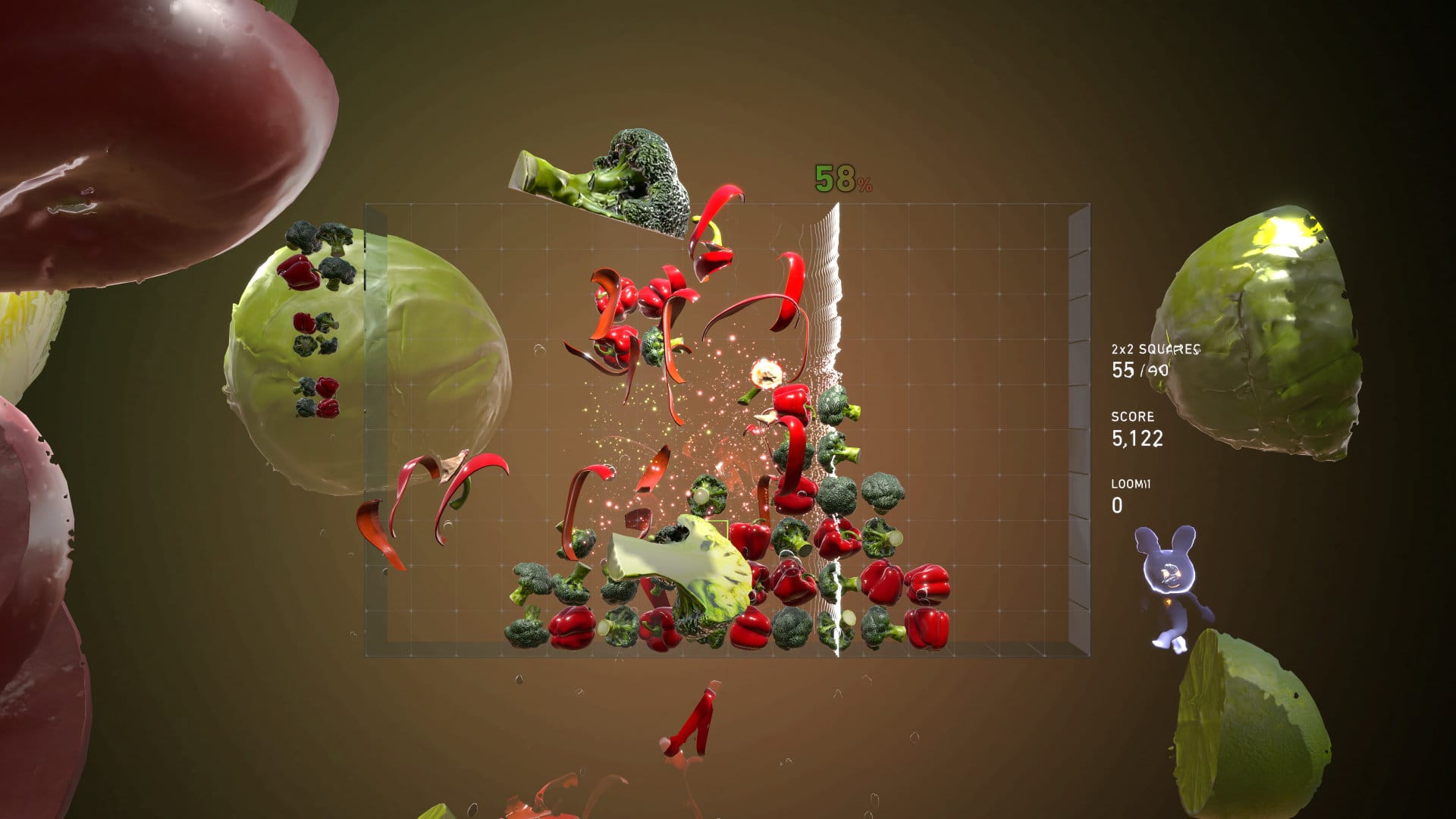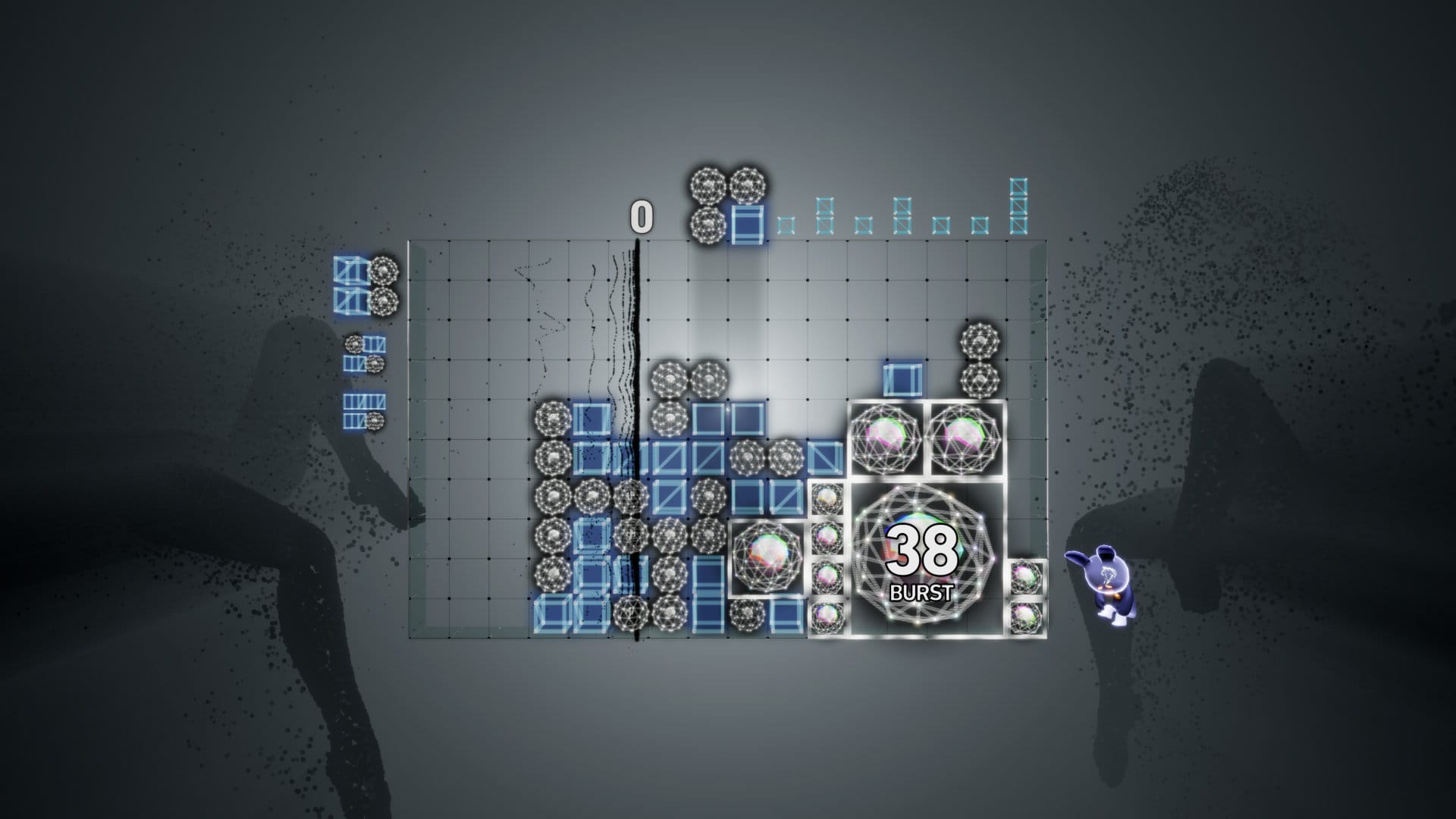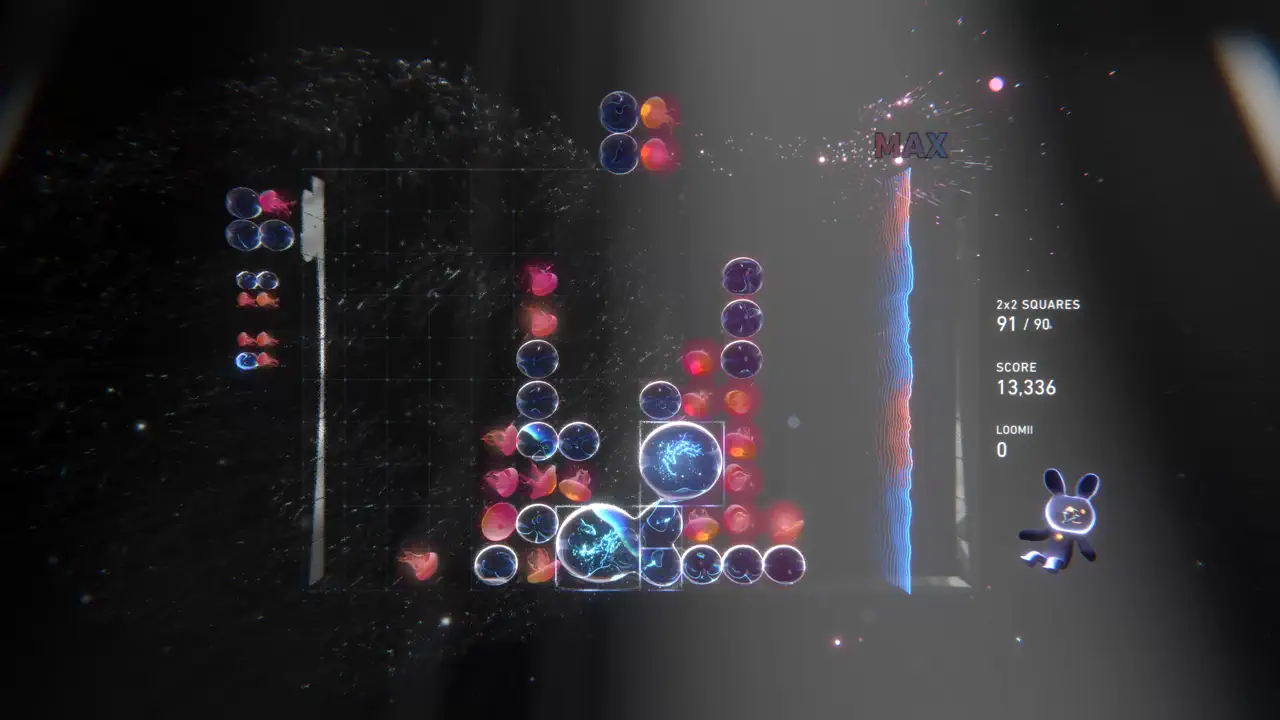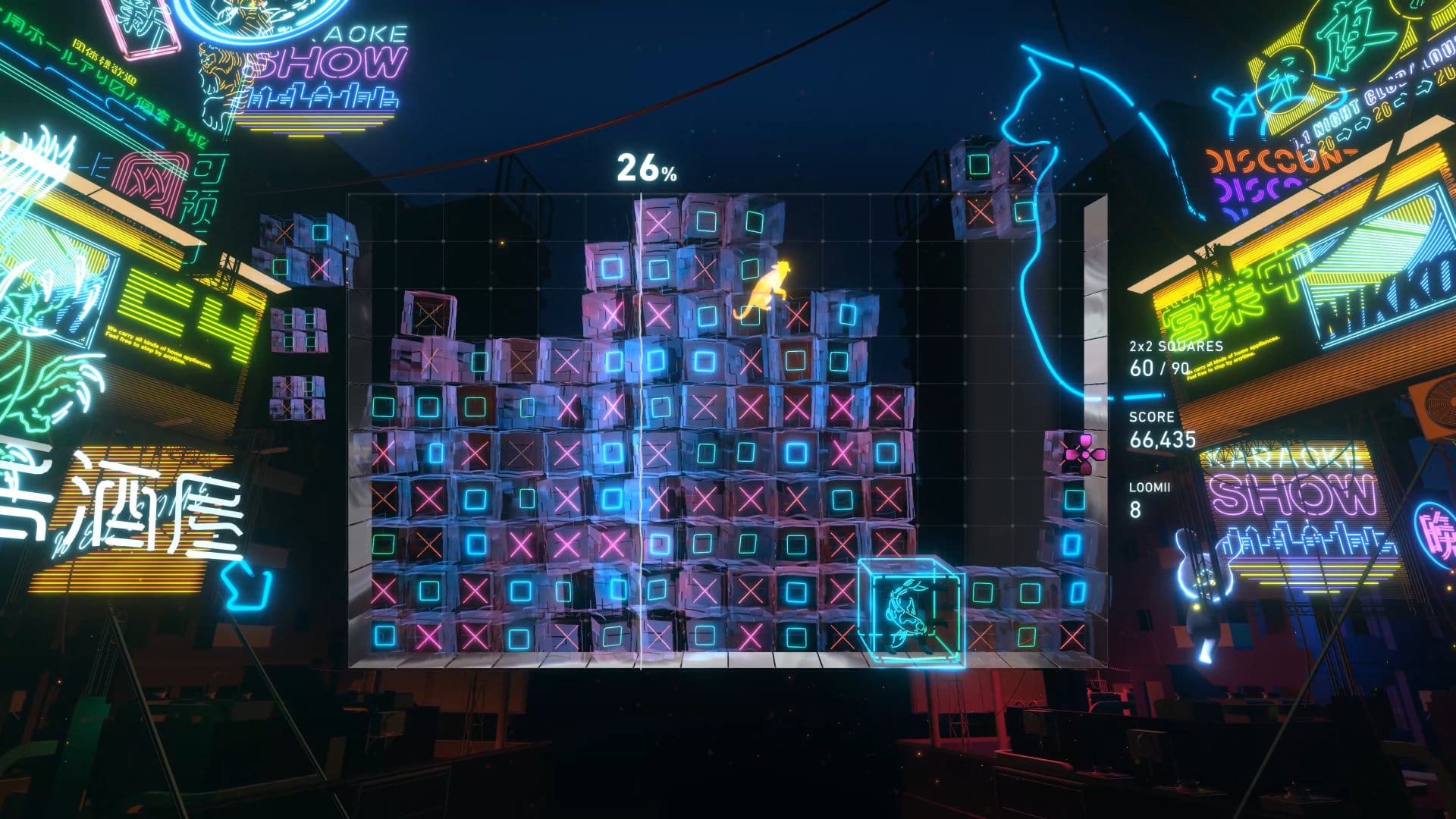In my freshman year of college, a friend of mine convinced me to go to Saint Mark’s and impulse buy an imported PSP before it had launched in the States. This was generally bad financial advice, as it blew a gargantuan hole in what little disposable income I had at the time. But buying it felt fantastic, one of the first real things I had purchased as an adult who could vote, smoke, die in a war, but not yet legally drink. We then proceeded to go around the corner to a dingy and poorly lit Italian restaurant and played each other in the only game we had at the time, Lumines: Puzzle Fusion.
SHININ'...my old friend.
I don’t remember the meal, but I do remember the walls melting away and both of us being locked in silent combat for much of the duration of our time there. From that moment onward, the PSP became ”the machine that played Lumines.” Lumines came to represent that feeling of PlayStation cool – the idea that video games were these things that young, fashionable adults in urban areas played, like the scene in Hackers where they go to the club and play a pre-vis version of Wipeout on a wall of CRTs. It was also a game that represented what rhythm games can and should be, a sublime melding of music and play, of performance and curation. Now, decades later, Lumines Arise returns when much of that feeling of gaming’s potential for being cool is largely absent. Lumines Arise is that feeling of 2000s cool unthawed, along with all it represented.
The original Lumines was the product of Tetsuya Mizuguchi, the man who introduced a generation of indoor internet kids to the concept of synesthesia with the game Rez. The player drops various configurations of 2x2 blocks in various configurations of two patterns, while a metronome line sweeps the stage. When the line sweeps through a solid color square, the square is eliminated. What differentiates Lumines from many other puzzle games is that it makes explicit the implicit rhythm and tonality of the format with different speeds and custom music. A stage in Lumines is bespoke, with everything synchronizing and pulses in perfect harmony.
I kinda love that they just used the Michel Gondry video as the backdrop for this.
It has been well over a decade since we have gotten a Lumines game that was not some flavor of remake. In the void of new releases, Q Entertainment and subsequently Enhance (the company Mizuguchi would go on to found in 2014) went on to riff on similar puzzle-rhythm fusion concepts, the most notable recent release being Tetris Effect. Tetris Effect was a Lumines-themed mutant, with its immersive music and textural themes infecting the most storied and beloved puzzle series in history. But Tetris Effect always had to be a Tetris game first and foremost, a quality that confined what it could do as a synesthetic experience, and on some level it felt like a dry run for the inevitability of Lumines Arise.

To play Lumines Arise actively is to give the whole of your being to sound and form. The textures of individual tile dyads shift between stages; on one stage they take the shape of jarringly vivid fruits and vegetables, on another they are droplets of water and jellyfish. The dropping, clearing and twisting of each block sync harmoniously with the song in the background, one stage in particular being flanked by giant raving chameleons.

Sets of stages in Lumines blend in with one another like an album or a DJ set. Like Tetris Effect before it, it is one of the better showcases for VR as a format, as the immersion of being fully swaddled in a space and surrounded by whirling particles gels perfectly with the game’s thesis of synesthesia and connection. You are meant to be locked in, senses blending in seamlessly with one another. But while the boutique VR experience that I dusted off my Valve Index for was nice, Arise is also a fantastic fit for portable gaming. It now has a permanent home on my Steam Deck in much the same way my PSP always had Lumines: Puzzle Fusion.

There are times where the sheer noise of the default blocks can be a bit overwhelming. This is especially noticeable if you compare Arise to the original PSP classic, a game whose tiles were fairly clean and legible, steeped in the exact Y2K design sensibility you’d expect from a PSP puzzle game in 2004. That said, Arise also has a solid accessibility menu, allowing you to dial in the experience to fit different forms of color blindness and reduce the severity of particles. There are also spider and snake filters, which is a nice inclusion because I’m sure those levels in particular would be mildly terrifying to me if I had that phobia.
The music selection is apropos in Arise, a lot of bumping techno and a bunch of pop tracks crossing a variety of genres. The electronic music in these games is more strongly curated, and there’s at least one hip hop track in Event 7 that I just straight up don’t like. If I was more jaded I would say a few of the vocal tracks are corny, but I am old enough to also find them charming. They also contain a wisp of earnestness that is fundamental to the game’s premise of connection and that is inseparable from the mentality that this game is culturally downstream of.

It is that commitment to earnestness that I find so refreshing. I do not need to explain to you how cynical the world is. Art these days feels self-aware and too clever by half, unable to let its guard down to say something from the heart. Lumines Arise feels unstuck in time, like a memory of a dinner with an old friend when you were younger and more naive, when the future stretched out infinitely, before you were crushed by the weight of just getting by. It is a reminder that the beauty of the world is still limitless and luminous, that even something as abstract and frivolous as a puzzle game can stir in you emotions that are wordless and perhaps divine.


